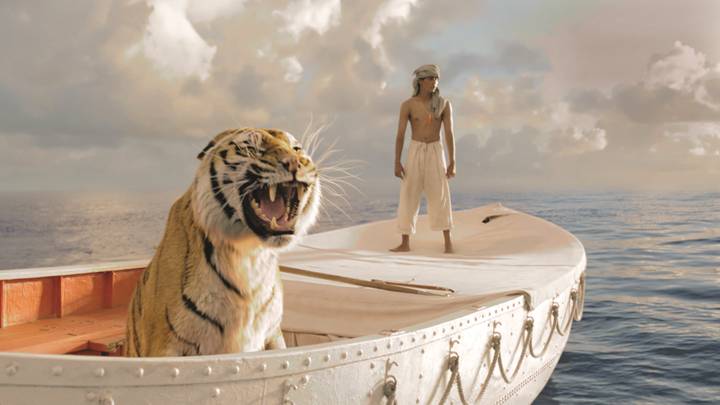A boy and a savage tiger stranded at sea in a solitary lifeboat—sounds whimsical. Not in“Life of Pi,” however, the breathtaking film directed by Ang Lee. The movie version of Yann Martel’s award-winning novel, with its incredible usage of 3D, engages the audience in a mind-blowing tale of survival and a spectacular voyage toward self-discovery.
“Life of Pi communicates the reminisced memoir of Piscine Molitor Patel, self-nicknamed Pi. His parents operate a local zoo in a botanical garden in the picturesque Pondicherry, a town part of French India. Although raised a Hindu, the young Pi comes across Catholic and Muslim faiths and begins practicing all three to certain degrees, much to his father’s disapproval. As a teenager, Pi is on his way to manhood, complete with a girlfriend. Nevertheless, a year later, his father decides to move the family to Canada for a fresh start, along with the slew of zoo animals later to be sold in North America. The disheartened Pi sets sail with his family on a Japanese freighter only to encounter a fierce storm which sinks the vessel, leaving only Pi, a 450-pound Bengal tiger named Richard Parker, a spotted hyena, an injured zebra, and a female orangutan as the sole survivors on a single lifeboat. The real excitement comes afterwards.
The movie is a near flawless masterpiece. Lee, best known for the Oscar-winning “Crouching Tiger, Hidden Dragon,” more than successfully explores high 3D technology to explicate what cannot be discerned in a 2D perspective. Hollywood filmmakers who vainly attempt to utilize the technology for added profit could collect a lesson or two from the way Lee handles it. One of the scenes I particularly admire was when the camera is positioned beneath the waves and pans upward, past the boat and into the deep blue sky beyond the horizon. I actually gasped aloud as I came to realize the essence of 3D in this scene. Without it, I could not have appreciated the vast expanse in which Pi and his companion pull through all alone on the lifeboat.
The application of 3D and computer graphics is certainly a must in the film, although certain scenes are exceedingly animated—sample a shot where a fascinated Pi is excitedly skimming the waters full of illuminated jellyfish with his bare hands. Take a look at the mysterious island, notably the segment where nightfall comes into play. The whole island is ablaze with the phosphorescence of a potent acid to the point where the meerkats living there appear to have a neon green tint on their fur. I was literally shaking my head in confusion; the scene was much too vibrant and far-fetched to be presumed true. Not to mention the largest, most luminous whale most people have ever seen.
In addition to its remarkable visuals, “Life of Pi” features a phenomenal performance. Because the bulk of the story resides at sea, the whole movie leans on the performance of Suraj Sharma, who plays teenage Pi. Lee himself praised Sharma’s acting by saying that Sharma’s countenance, mainly his piercing soulful eyes, perfectly portrayed the character Pi. Sharma, making his acting debut, gives an excellent performance. His delivery of Pi’s undying hope and appropriate emotions simply conveyed through his eyes was a quite impressive for someone with no acting experience. I daresay that Sharma is Pi himself.




